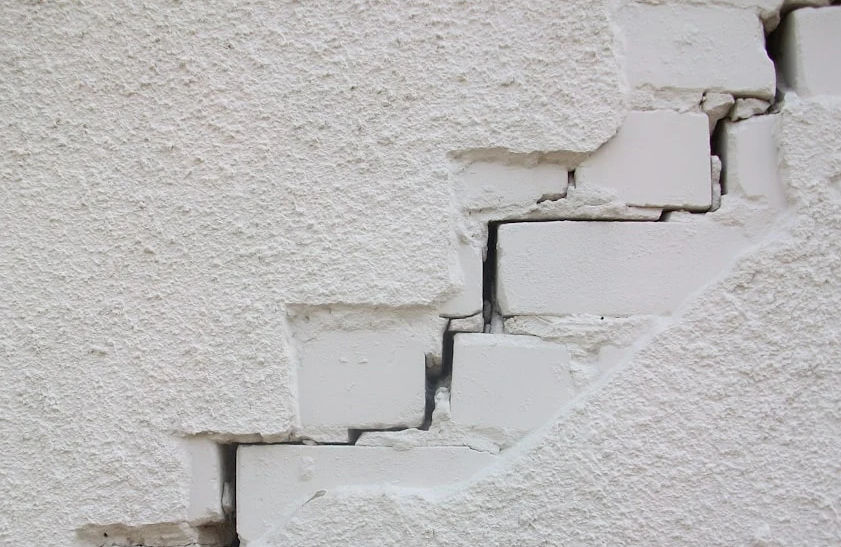Structural Issues
Types of Structural Issues
Signs of Structural Issues
1. Cracks or Bulging on Walls and Ceiling
Not every wall or ceiling crack indicates structural damage, per sey, but you should keep an eye on them. Over time, small cracks can evolve into something more problematic. Large cracks paired with a sagging ceiling or cracks above doorways in a step pattern are a sign there is in fact a more serious problem.
2. Soil Pulling Away from House Walls
Soil expands and shrinks throughout the seasons. If you notice soil pulling significantly away from the house (check patio, porch and deck areas too), it can signal that the home’s foundation was not laid properly.

3. Cracks in Chimney
It is easiest to spot cracks in the mortar and/or in the bricks of your chimney from the outside of your home. Similar to other exterior walls, cracks in your chimney are a sign that your home is shifting and placing excessive pressure on the bricks. You should be sure to look into a crack chimney to determine if the pressure is related to a structural issue or foundational.
4. Uneven Gaps on Windows and Doors
Walls with windows and doors are more vulnerable to pressure because of the holes that have been cut into them. Oftentimes, areas around windows and doors will show signs of structural damage before any other areas of your walls:
Uneven gaps around doors
- Doors and windows won’t open or close smoothly
- Doors and windows won’t lock properly
- Doors and windows are separating from the wall
- Doors won’t stay closed
5. Sagging, Sloping or Cracking of Floors
Shifts in your home’s foundation will be apparent when inspecting your flooring for sagging, sloping or cracking. The greater the movement, the more likely your floors will show signs of structural imperfections.
6. Sagging Roof and Roof Leaks
If your roof is in its prime and hasn’t reached the end of it’s life cycle, there’s no reason you should see sagging or uneven roof lines. This indicates that there are issues with the roof structure itself. Many things can damage your roof structure, such as:
- Timber frame movement
- Weather-induced damage
- Lack of sufficient maintenance
- Removal of load-bearing walls
- Termite damage
- Incorrect sizing of framing timbers
7. Damp Subfloor
A damp subfloor indicates a lack of sufficient ventilation in your floors. The dampness can lead to rotting floor timbers, which can be spotted by surface stains and signs of deterioration.
8. Crumbling Concrete/Brick
While uncommon, concrete and/or masonry that has come into contact with high moisture and/or certain chemicals can start to erode. This is due to a chemical reaction that actually breaks up the bond of the material itself – causing the concrete to crumble, which can become a major structural issue if not caught early. Erosion of this nature is often seen in the lower areas of brickwork below the waterproofing membrane of your home. Be sure to inspect the cracked areas to determine the cuase.
More Information
For more information on how we can help simplify the process, contact us.
